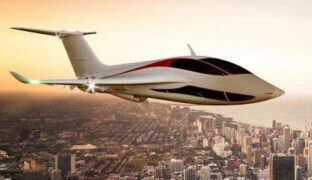Can flying directly from point-to-point become as common as driving? If the team at ARC Aerosystems(Formerly SAMAD Aerospace) has their way, the answer is yes, as Urban Air Mobility becomes more prevalent. And the Q-Starling can be flown by pilots with a modified Private Pilot License (PPL) qualification.
ARC Aerosystems’s concept 2-seat Q-Starling is a high-end Personal Air Vehicle (PAV) combining the best of design elements from jets and vertical take-off and landing (VTOL) aircraft. ARC’s did not stop there. They also incorporated elements from high-end sports cars such as Aston Martin, Jaguar, and Maserati in the interior design of the cockpit for efficiency, comfort, and visibility.
The use of carbon fiber throughout the PAV leads to high-performance capabilities and enhances maneuverability thanks to the increased strength and lightweight.
The power for the Q-Starling comes from an environmentally conscious hybrid-electric system. The turbo-generator runs on bio-diesel/SAF (sustainable aviation fuel). Once the aircraft has transitioned from vertical flight, a large diameter hover fan provides forward thrust. The turbo-generator then becomes a turbo-jet in conventional flight. The Reaction Control System (RCS) fans in the wing and tailplane maintain control and balance.
The Q-Starling will carry one pilot and one passenger. With a length of 8.08 meters and a wingspan of 7.92 meters, the PAV will support a maximum take-off weight of 1,040 kg. Cruise speed is 250 kt (300 mph) and the maximum speed is 300 kt (360 mph). The aircraft boasts a range of 500 miles.
Describing the company’s newest endeavor, Dr. Seyed Mohseni, CEO and founder of ARC Aerosystems, said, “The Q-Starling will give owners the ultimate luxury in personal hybrid-electric flying. The efficient sustainable Q-Starling will give passengers unparalleled point-to-point mobility options.”
News Source: Composites Manufacturing Magazine


